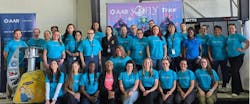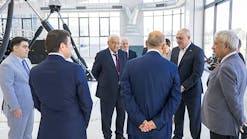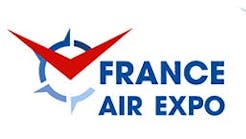Quality Fly Becomes the First EU Carbon-Neutral Flight School
Climate change is a global challenge that requires shared efforts to mitigate its most serious consequences. Starting in 2022, Quality Fly reinforces its innovation edge becoming the first European Union flight school to achieve carbon neutrality.
By reducing the carbon footprint and offsetting the remaining emissions through investments in clean energy projects, Quality Fly has become the first European Union flight school that offers carbon-neutral integrated and modular programs.
It applies to all flight programs, requires no additional investment by the students and maintains Quality Fly at the forefront of European sustainable aviation.
Offsetting Carbon emissions is one more step on the journey to the long-term goal of becoming a zero-emissions flight school. It complements previous improvements that have been consolidated in the last years:
• The fleet has been fully renewed, replacing the older generation fleet with comparable, modern aircraft that cuts fuel consumption and emissions by as much as 50% on a per-hour basis.
• The student journey has become fully paperless, from enrolment to ground training, flight operations and license issuance, saving several kilograms of paper and ink every day.
• Quality Fly have started to acquire 100% renewable electricity from clean energy producers, effectively reducing our office and administration climate impact to near zero. As in other European countries, the origin of the electricity is verified by independent auditors.
• As soon as the technology become fully operational, Quality fly is determined to replace the carbon offsetting for a full 100% electric fleet
What is Carbon Neutrality?
Carbon neutrality is a condition in which an individual or a company reduces its carbon footprint to zero. Carbon footprint refers to the emission of greenhouse gases (such as carbon dioxide, methane or nitrous oxide, among others) derived from the activity of this person or organization. This can be achieved through a variety of measures:
- Reducing emissions: this can be done, for example, by improving the efficiency of the operations, removing unnecessary processes or using clean sources of energy.
- Offsetting emissions: since not all emissions can always be eliminated, the remaining carbon footprint may be compensated by supporting environmental projects that either absorb CO2 from the atmosphere directly or prevent further emissions. Some examples of these are renewable energy production, reforestation or carbon capture, amongst others.
How Quality Fly Achieves Carbon Neutrality?
According to Juan Cervero, CEO of Quality Fly, “Since the flight training activity necessarily implies direct emissions, at least until electric aircraft offer optimal training possibilities, some emissions cannot be eliminated. Quality Fly has decided to voluntarily offset them by investing in clean energy projects in developing countries, namely India, which not only compensate for our carbon footprint, but also have a positive social and economic impact in the region”. These projects include solar, wind and hydropower electricity generation. They are channeled through the UNFCCC (United Nations Framework Convention on Climate Change) and verified by independent auditors using international standards.”
For full transparency and accountability, as previously mentioned, Quality Fly estimates full-year figures for 2022 of more than 4,000 flight hours flown, or roughly 93,000 litres of gas used (Mogas or Avgas). This results in emissions of about 210-220 tonnes of CO2 equivalent.
The clean energy investments Quality Fly has made will save 240 tonnes of CO2 emissions to the atmosphere, fully offsetting our direct emissions and energy usage (scopes 1 and 2), as certified in this official voluntary cancellation issued by the UNFCC
From Carbon Neutral to Zero Emissions
Carbon neutrality is a further step towards a fully sustainable flight training world. It is feasible right now, both technically and economically, so there is no good reason to settle for less. However, it’s by no means the end.
Cervero explains, “At Quality Fly we are committed to excellence, innovation and environmental responsibility. After developing the most innovative ATPL integrated course in Europe, we are proud to offer the greenest alternative to individuals pursuing a career in aviation. We are certain that candidates will value this factor and we hope that other schools will follow in pursuit; all together achieving the highest impact.
"Looking forward, we will keep assessing further options to improve our training and to reduce our climate footprint, both in the short and long term; we are excited about the ongoing development efforts in areas such as sustainable aviation fuel (SAF) and hybrid and electric aviation."





